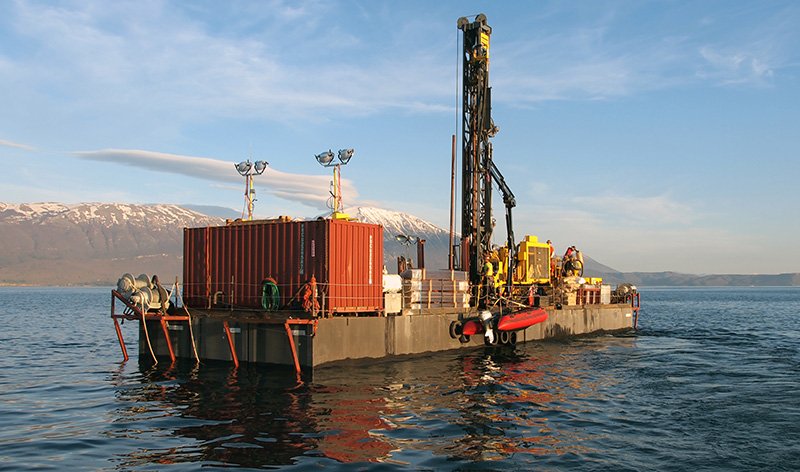Europe’s oldest lake traces 1.4 million years of Mediterranean climate
Publication in Nature
Lake Ohrid is the oldest lake in Europe. An international science team has now revealed that the lake first established 1.36 million years ago and existed continuously since then. Through a deep drilling campaign the team was able to reconstruct climate over the entire history of the lake in exquisite detail. These results will help refine future climate scenarios for the Mediterranean region. The team, including palaeoecologists Dr Timme Donders and Prof Friederike Wagner-Cremer from Utrecht University, published the results in the online edition of Nature today.
Located at the border between Albania and North Macedonia, Lake Ohrid is famous for its exceptional biodiversity. It is home to more than 300 unique (endemic) animal and plant species that are found nowhere else in the world. The scientific project in which the scientists from Utrecht University participated, aimed to obtain new information about the age and origin of the lake, the climate history of the northern Mediterranean region, and the reasons for the high degree of endemism and biodiversity.

Analysing sediment cores
The team’s deep drilling campaign at Lake Ohrid reached a maximum depth of 568m into the sediments at the bottom of the lake in a water depth of 245m. After the fieldwork in 2013 it took the researchers five years to analyse the recovered sediment cores using many independent techniques to provide a robust understanding of past climate and environmental change.
Robust understanding of past climate change
The extensive sediment succession has allowed the team to reconstruct climate over the entire history of the lake in exquisite detail. Geochemical and biological indicators (pollen) of past climate conditions in the record show that winter rainfall increased in the northern Mediterranean region during warm, interglacial periods. With a climate model the team simulated these rainfall increases, and demonstrated that they are a result of strengthening low-pressure systems over the western Mediterranean, particularly during autumn. The higher rainfall in the northern Mediterranean borderlands was most likely due to warm sea-surface temperatures. Such local enhanced effects from warming could arise from recent human-driven climate warming. As climate projections from the Intergovernmental Panel on Climate Change (IPCC) show an inconsistent picture of future climate change for this region, the new results from Lake Ohrid will help to better constrain future climate scenarios by fine tuning regional climate models.

Fossil pollen grains
The scientists from Utrecht University, including Dr Aleksandra Cvetkoska at the time of the research, focused on reconstruction of the past vegetation through analysis of fossil pollen grains from the sediments. The Lake Ohrid region remained warm and moist enough for the forest to survive the glacial periods. Rapid variations in tree pollen therefore directly reflect the past changes in temperature and moisture.
Successful drilling campaign
The fieldwork was one of the most successful lake drilling campaigns of the International Continental Scientific Drilling Program (ICDP). This international consortium, of which the Netherlands has been a member since 2011, funds global scientific drilling operations such as at Lake Ohrid.
Publication
Bernd Wagner, Hendrik Vogel, Alexander Francke, Tobias Friedrich, Timme Donders*, (…), Friederike Wagner-Cremer*, Thomas Wonik, Xiaosen Zhang
Mediterranean winter rainfall in phase with African monsoons during the past 1.36 million years
Nature, 2019
* = from Utrecht University

